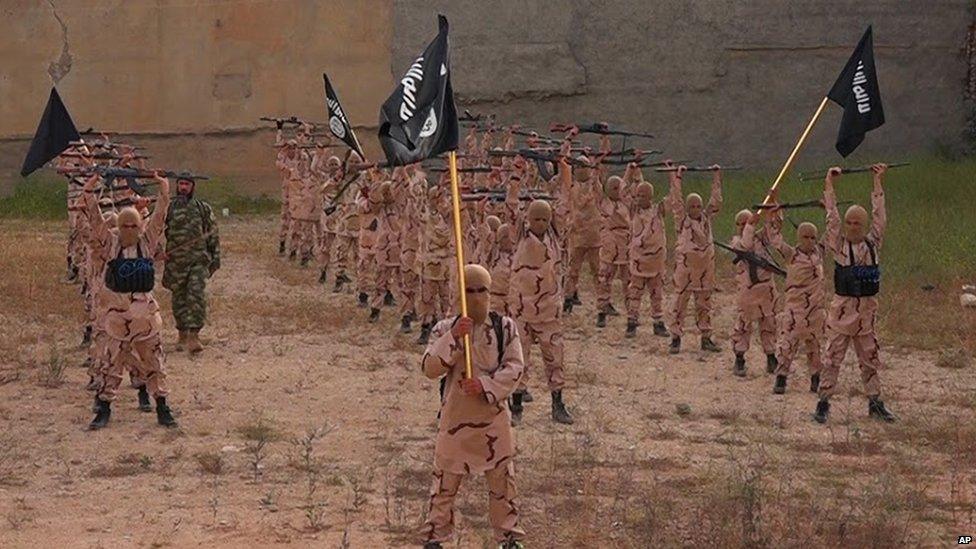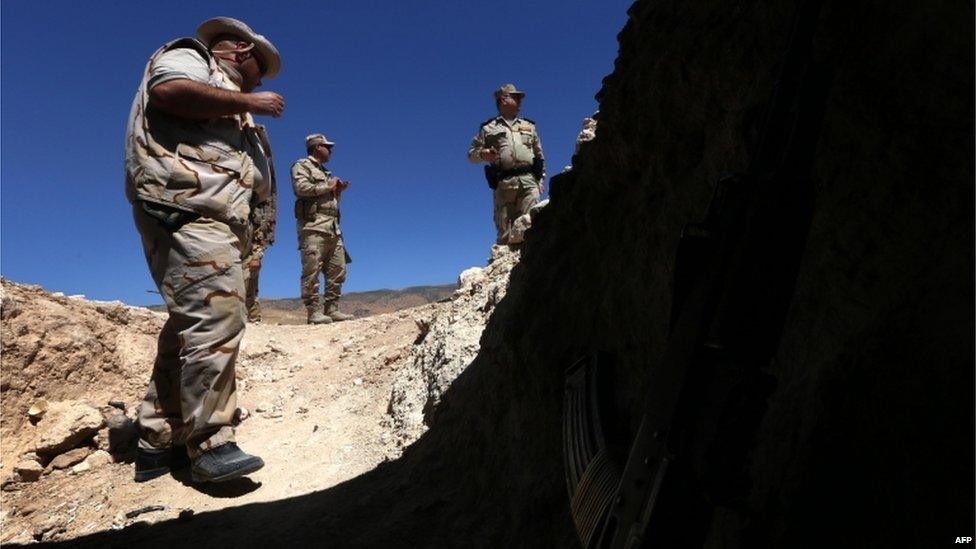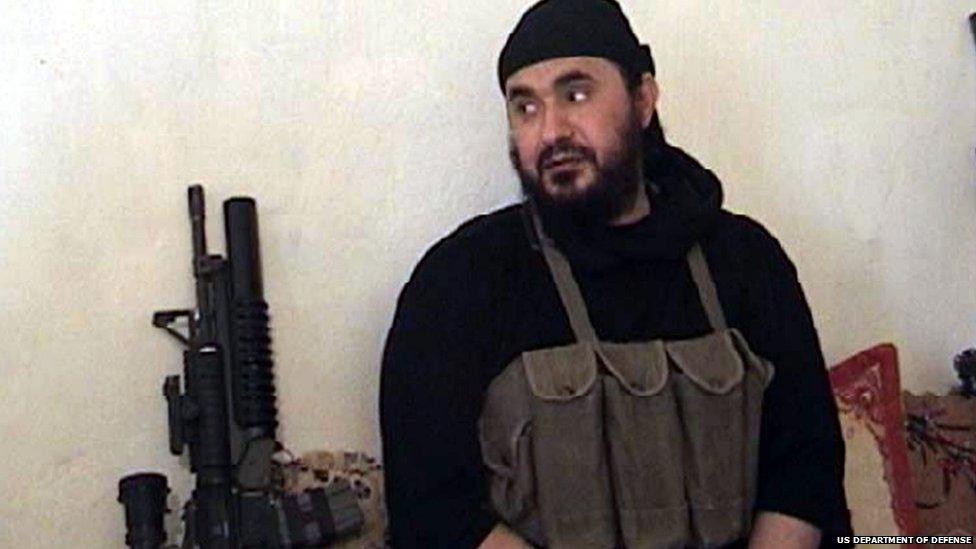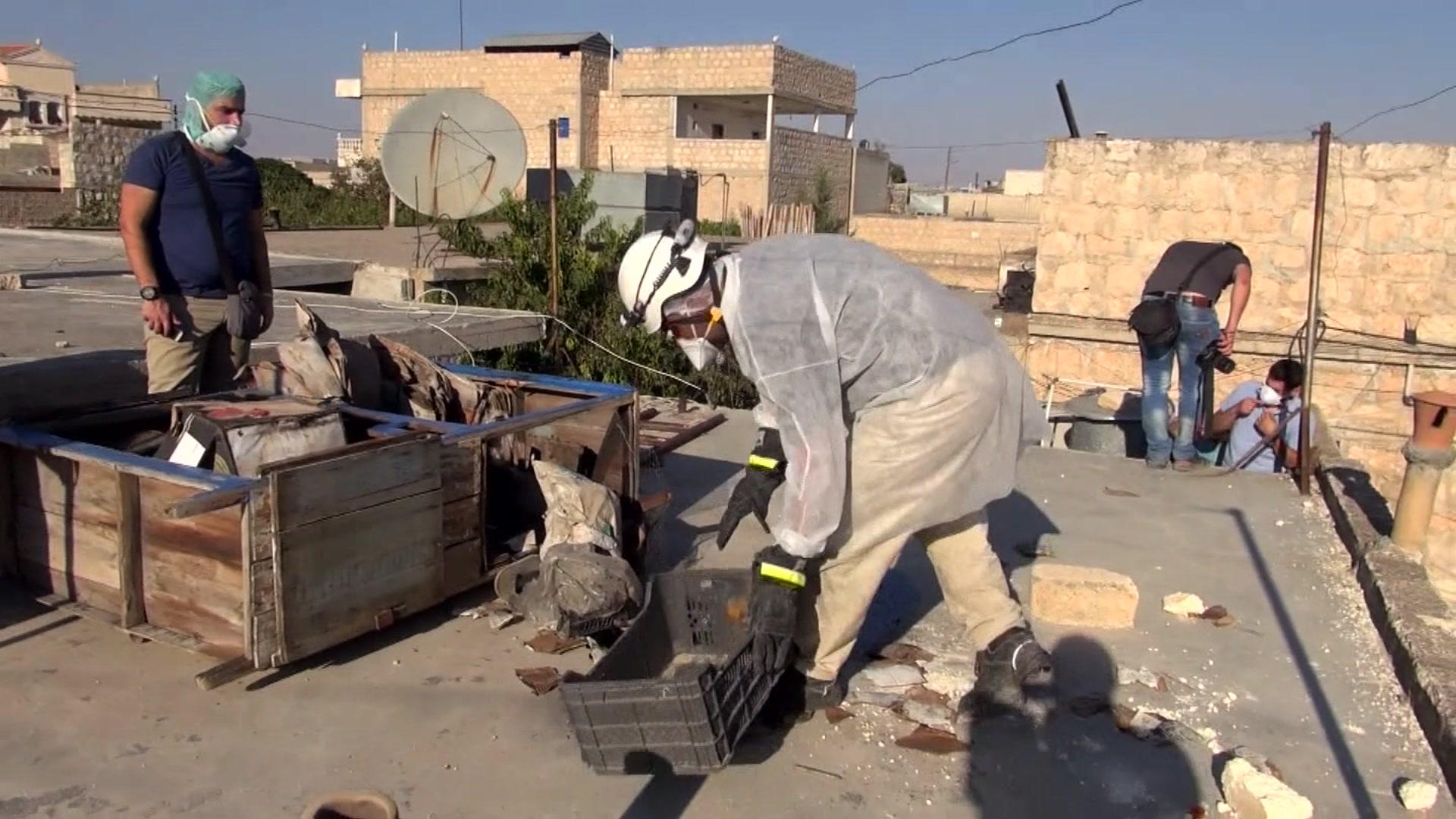IS, al-Qaeda, and how jihad uses chemical weapons
- Published

There are fears that IS is creating its own chemical weapons
The disturbing reports of homemade mustard gas being used by so-called Islamic State (IS) militants in Syria and Iraq, while shocking, should come as no surprise.
There is a history of modern jihadists experimenting with and sometimes using chemical weapons, dating back to al-Qaeda's training camps in Afghanistan in the 1990s.
There is also a clear link between those experiments at the time and the IS leadership's strategy against its enemies today.
"The thing that surprised me is that they haven't used it (mustard gas) earlier," says Aimen Deen, a former al-Qaeda operative who witnessed chemical experiments first-hand.
"The experiments date back to 1997 in Afghanistan. They experimented with many different varieties of chemical weapons."
He says the gasses tested were homemade and included phosgene, chlorine and hydrogen cyanide. Rabbits and dogs were the most common animals to be used.
Harrowing footage showed the aftermath of an alleged chlorine gas attack by Syrian government forces
"They used to bring in these kind of aquariums, fishing aquariums, basically, one meter by half a metre and they will put a rabbit inside, or a small dog or puppy inside.
"And then they seal it with silicone and they insert first the powder element - I'm not going to name them for obvious reasons - and then they will add later the liquid element in order to see if there is a reaction."

What is mustard agent?
The term "mustard gas" is commonly used to describe the agent, but it is liquid at ambient temperature.
Sulphur mustard sometimes smells - like garlic, onions, or mustard - and sometimes has no odour. It can be clear to yellow or brown.
People can be exposed through skin contact, eye contact or breathing if it is released into the air as a vapour, or by consuming it or getting it on their skin if it is in liquid or solid form. It causes blistering of the skin and mucous membranes on contact.
Though exposure to sulphur mustard usually is not fatal, there is no treatment or antidote to mustard which means the agent must be removed entirely from the body.

"Once the gas is materialised due to the reaction then you will immediately see the animals writhe in pain and then die. Sometimes within seconds and then others longer."
Al-Qaeda were able to operate freely in Afghanistan for five years, from 1996-2001.
Thousands passed through its training camps, learning about firearms and explosives, before dispersing to countries all over the world.
After the 9/11 attacks in 2001 and the subsequent US-led Operation Enduring Freedom, the jihadists fled from the camps, mostly over the border into Pakistan, leaving behind videotaped evidence of their chemical experiments.

The US believes IS used mustard gas on Kurdish forces
But one key leader survived to take his knowledge to a new theatre of war.
Abu Musab al-Zarqawi was a Jordanian jihadist who was released from prison in Jordan in 1998. He went straight to Afghanistan where he was intensively trained by a master bomb-maker before setting up his own camp at Herat in the west of the country.
After 9/11, al-Zarqawi fled westwards through Iran to a Kurdish region of northern Iraq where he joined forces with a jihadist group called Ansar al-Islam.
Once the Americans invaded Iraq in 2003 al-Zarqawi was instrumental in forming the al-Qaeda cell that eventually morphed into today's self-styled Islamic State.
Al-Zarqawi, who is believed to have murdered the British engineer Ken Bigley as well as other prisoners, was killed in 2006 in a US air strike in Iraq.
Chlorine was and still is readily available in Iraq and has been used frequently in truck bombs by jihadists there and also in Syria in barrel bombs dropped from the air by President Assad's forces against rebels.

Jordanian militant Abu Musab al-Zarqawi is known to have experimented with chemical weapons
"It was the easiest of all the gases al-Qaeda experiments on to make," says Mr Deen.
"Since the substances that are necessary for chlorine are easily available everywhere, it was his (al-Zarqawi's) weapon of choice.
"Since it wasn't lethal, (it was still) potent enough to cause irritation or cases of severe respiratory problems and difficulties and that will drive an enemy away and cause casualties."
Mr Deen, who is now an international consultant on jihadism, believes that IS leaders are being cautious in their use of chemical weapons as they are wary of retaliation by the US.
But I asked him what he thought was behind IS's recent use of mustard gas against opponents in the Middle East.
"In Syria," he says, "where their opponents are other jihadists who are as suicidal and as stubborn as they are, the best way to dislodge them is to use chemical weapons.
"So I think it was a strategic choice and they felt that to some extent using the chemical weapons on other jihadists will not invite the wrath of the US at this stage."
- Published10 September 2015

- Published11 September 2015
